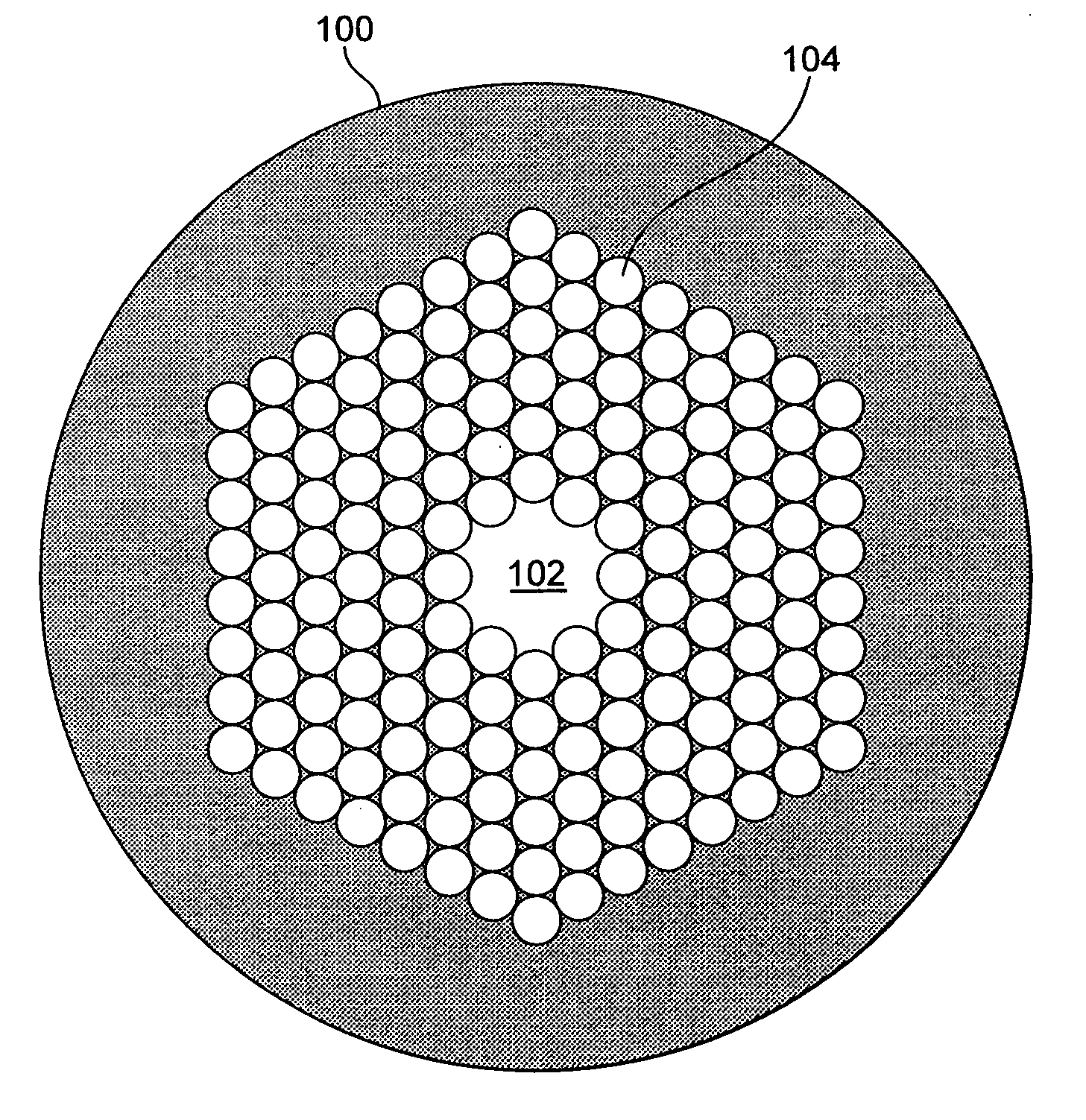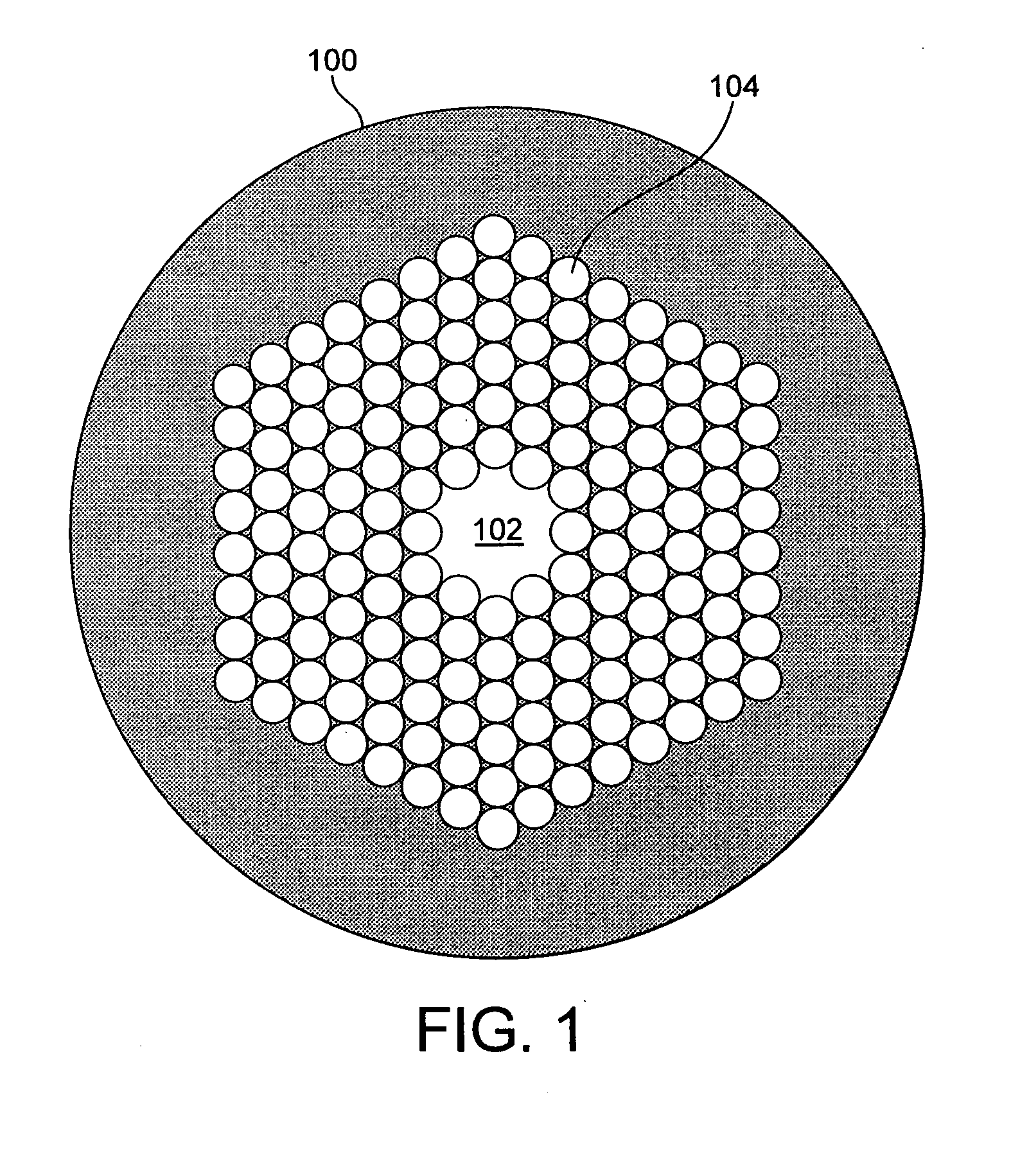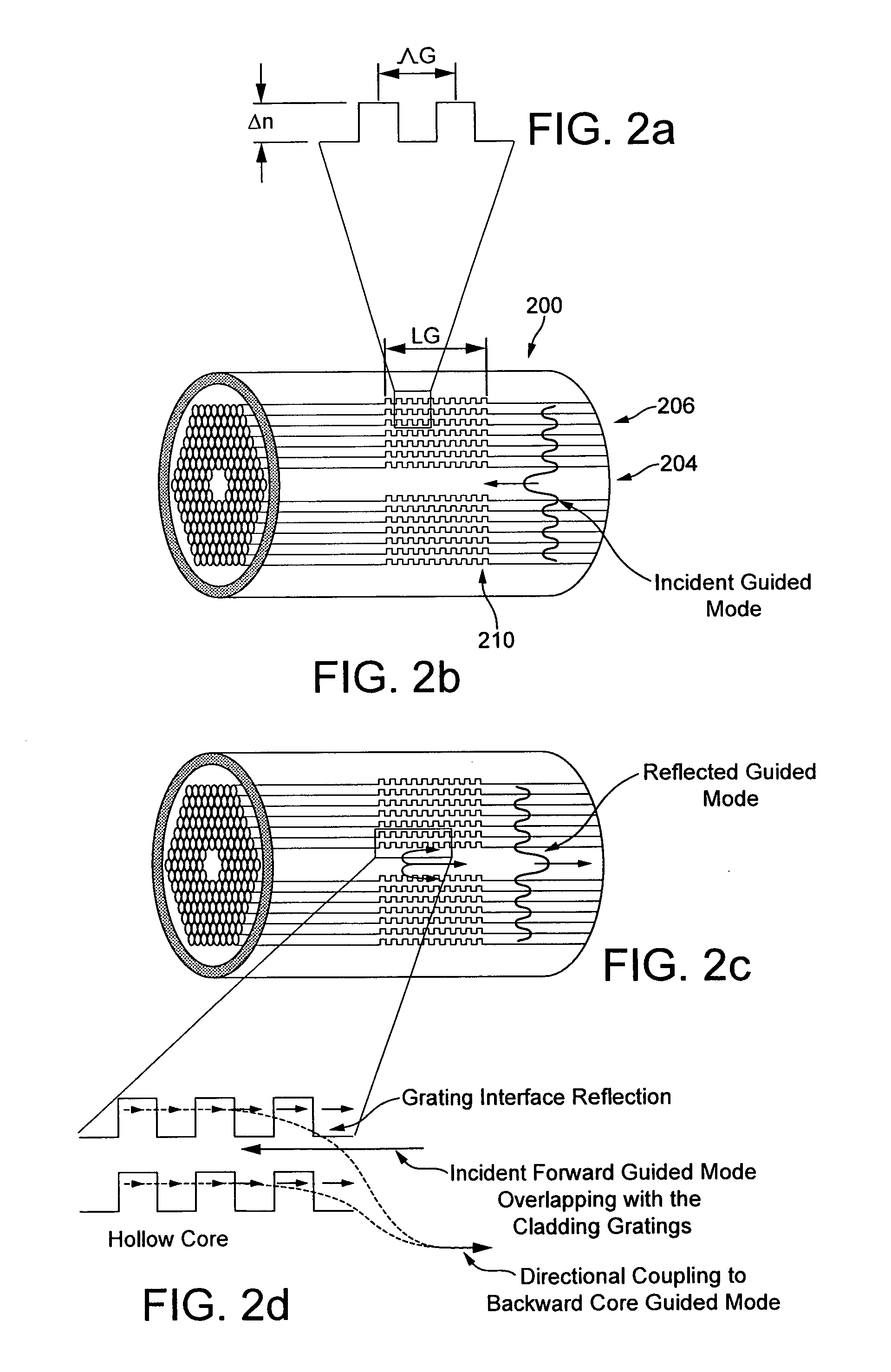Hollow Core Photonic Crystal Fibre Comprising a Fibre Grating in the Cladding and Its Applications
a photonic crystal fibre and core technology, applied in the field of hollow core photonic crystal fibre comprising a fibre grating in the cladding and its application, can solve the problems of light power loss of the order of 1 db per splice, device is therefore less useful for applications, and the achievable reflection remains limited in these assemblies, so as to achieve large reflectivity and high reflectivity. the effect of large finess
- Summary
- Abstract
- Description
- Claims
- Application Information
AI Technical Summary
Benefits of technology
Problems solved by technology
Method used
Image
Examples
Embodiment Construction
[0050]Referring to the Figures, the invention can be seen in more detail.
[0051]As shown, for example, in FIGS. 2b, 2c and 2e, an optical fibre 200 comprises a Hollow Core Photonic Crystal Fibre (HC-PCF) having a hollow core 204 surrounded by a cladding 206 of silica microcapillaries. A HC-PCF is the preferred waveguide for the optical fibre 200 since it allows unprecedented interaction between light and a gas contained within the core 204 of the fibre. However, it will be appreciated that any appropriate fibre or wave guide may be used. It will further be appreciated that light which is directed along the core 204 of the HC-PCF is confined in two dimensions, radially outward of the longitudinal axis of the core 204, due to the photonic band gap imposed by the holey fibre cross-section of the cladding 206. In the embodiments shown, a portion of the cladding 206 is then arranged to form a longitudinal cavity 208 within the core 204 of the fibre in order to form an “air mirror” and ach...
PUM
 Login to View More
Login to View More Abstract
Description
Claims
Application Information
 Login to View More
Login to View More - R&D
- Intellectual Property
- Life Sciences
- Materials
- Tech Scout
- Unparalleled Data Quality
- Higher Quality Content
- 60% Fewer Hallucinations
Browse by: Latest US Patents, China's latest patents, Technical Efficacy Thesaurus, Application Domain, Technology Topic, Popular Technical Reports.
© 2025 PatSnap. All rights reserved.Legal|Privacy policy|Modern Slavery Act Transparency Statement|Sitemap|About US| Contact US: help@patsnap.com



